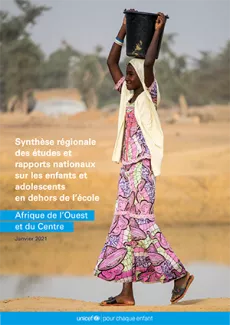West and Central Africa Regional Report 2021
Regional synthesis of national studies and reports on out-of-school children and adolescents
Highlights
Ten years after the launch of the Global Initiative for Out-of-School Children (OOSCI), it should be noted that while progress has been made in the fight against school exclusion,
the scale of what remains to be done is still considerable, in West and Central Africa in particular. Between 2010 and 2018 the rate of children and adolescents outside basic education (primary and lower secondary) decreased slightly from 33 per cent to 32 per cent. Due to the growth in the school-age population of 6-15 year olds during the same period, rising from 108 million to 137 million children and adolescents (i.e. an increase of 27 per cent), this slight reduction in the rate actually hides an increase of 8.8 million in the number of children and adolescents out of school in the region. In 8 years, between 2010 and 2018, this number has indeed increased from 31.6 million to 40.7 million. These figures, which are further aggravated by the effects of the COVID-19 pandemic that occurred in 2020, invite a better understanding of the school exclusion factors as well as a better vision of their prevalence in the region, in order to develop appropriate public policies.
This regional synthesis presents an inventory of the barriers to schooling as exposed by the national studies on children and adolescents outside of school conducted in 19 countries of the region between 2012 and 2019. All of these national studies have made it possible to take the measure of school exclusion through indicators and dimensions that each study has tried to implement as completely as possible without always succeeding. A list of barriers to schooling was however able to be drawn up for each country, with varying levels of detail concerning it. The data from these studies were supplemented by other sources.

